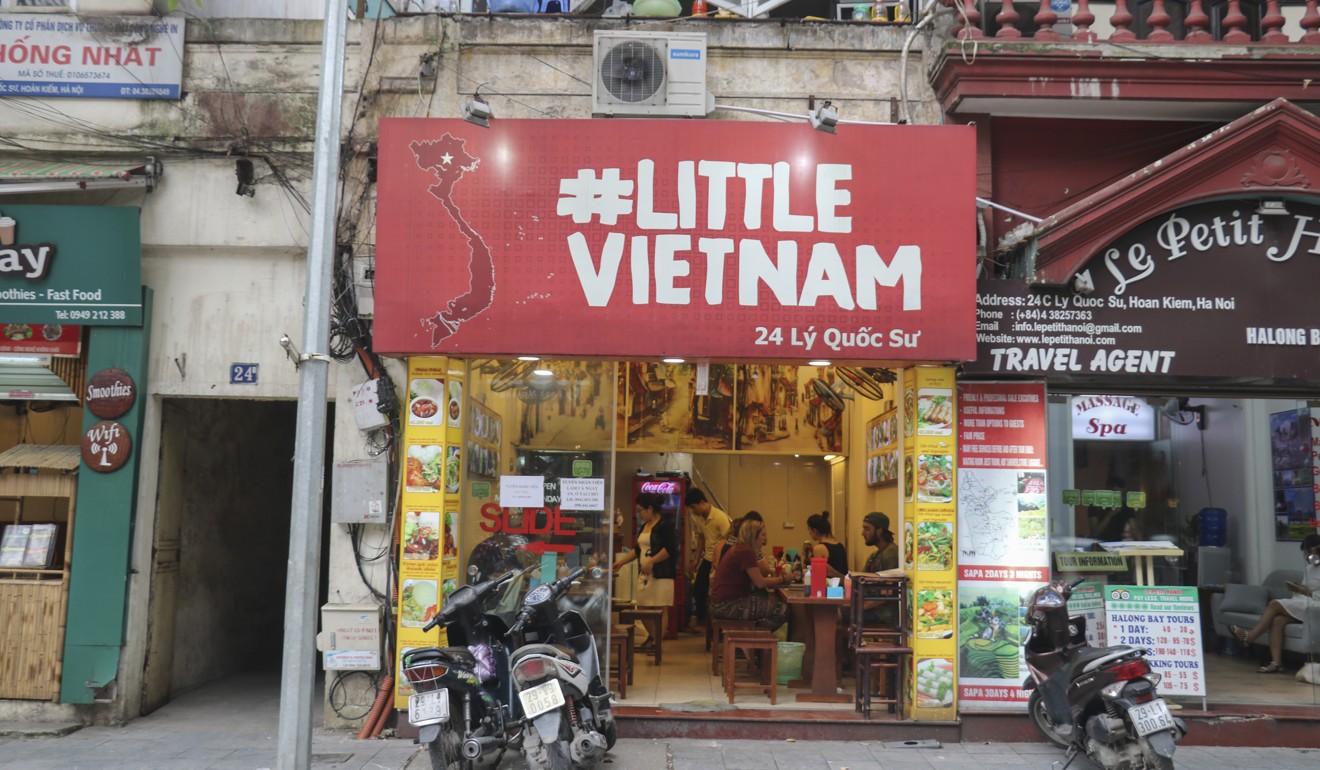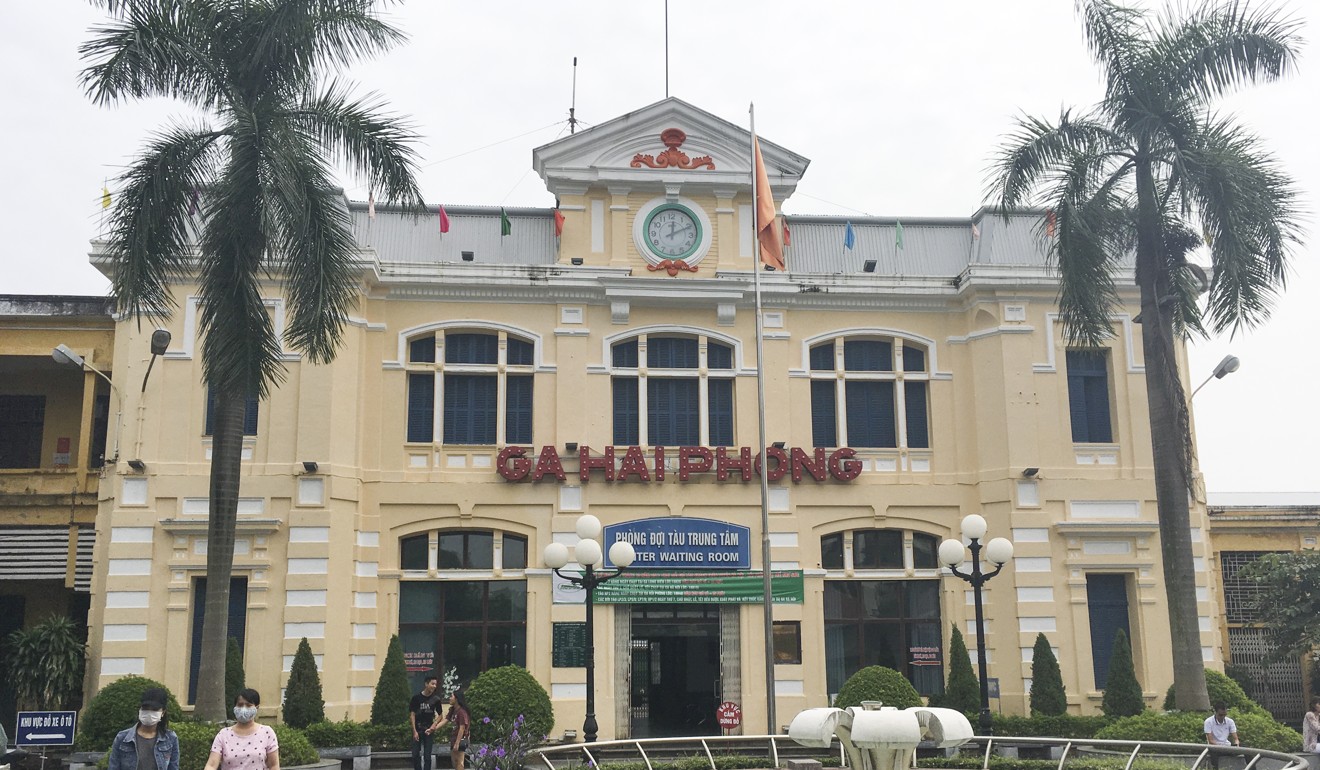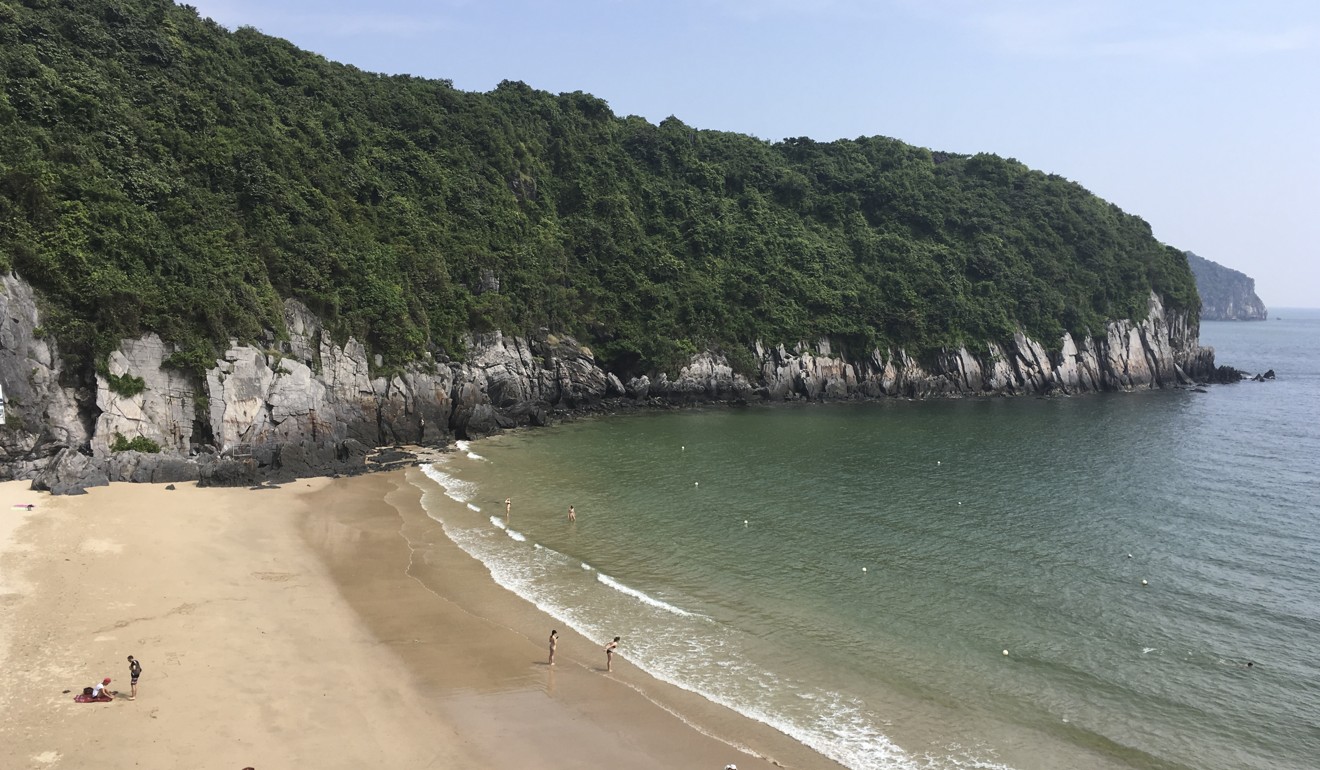
Halong Bay’s Cat Ba: a jewel in Vietnam’s island crown
A short train journey from Hanoi, Cat Ba and its neighbouring islands offer a lesser known, laid-back alternative to the country’s famous collection of karst islets
I spend the journey from the Chinese border lying on a bed, softly rocking with the motion of the overnight train. The air conditioning hisses overhead and the carriage smells of the wood that bedecks the interior. Outside, bats are navigating the purple sky as the world slowly turns invisible.
A fellow traveller is snoring gently as I dip into my guidebook and the prospect of Hanoi, enticed by the urban delights – the cool boutiques; Dong Xuan Market, where, apparently, everything that breathes (or once breathed) is on sale; and Hoan Kiem Lake, overlooked by the moss-manicured Turtle Tower.
The Vietnamese capital proves faithful to its contrarian promise – a fiery, contemporary city still awash in history. There’s enough great food to clog the most efficient of metabolisms yet the galleries, from hipster haunt Manzi to the prestigious Vietnam Fine Arts Museum, are widely distributed, providing worthy partitions to those belly bulging banquets.

Despite Hanoi’s many charms, the warning in the guidebook that every other person is hawking Halong Bay package tours proves prophetic. Images of the iconic limestone islets furnish the walls of tour operators, hotels and even restaurants along the scooter-terrorised streets of the romantic Old Quarter – a place half frozen in Indochine time.
The allure is hard to ignore, yet online complaints of overcrowded harbours and unseaworthy boats temper the temptation. The instinct to look where the crowds go, then promptly head in the other direction serves me well in the capital, where the backstreets are possessed of as much interest as the major sites, so I wonder how to apply the same logic to Halong.
Returning from a lively show at Hanoi Rock City one evening, a serendipitous scene unfolds as a fellow traveller staying at my hotel recommends Cat Ba Island: “Better man, no mob,” is how the old man, who sports a Gandalf-style beard, puts it.
The following day, reading up on the island over a hangover dissolving Hanoian breakfast – an egg coffee accompanied by a coriander and soft cheese baguette – I learn that Cat Ba is located on the southeast periphery of the Halong archipelago and is, by all accounts, far less hurried than Halong City, which has become a neon light for karaoke moths who fly from China and Korea seeking seafood and a good singsong. Better still, it is served by the train; a far more congenial mode of transport than a Southeast Asian bus tarring up the highway.

It’s an early start. We crawl out of Ga Hanoi heading eastward as the morning sun irradiates the backstreets, our locomotive worming slowly through the cluttered centre before a more linear passage traverses the Red River along the Long Bien Bridge. From here, it’s a gentle ride across the northern delta plain as we make for the coast.
The railway dates back to colonial times, as is evident when we’re delivered to a peach-coloured, quintessentially French station in Haiphong. This industrial city on the cusp of Vietnam’s boom economy is laced together by broad boulevards and imbued with a Mediterranean pace of life, evident in a plethora of congenial coffee shops.
Caffeine levels duly restored, I taxi to a roadside ticket booth, and mime myself passage to Cat Ba aboard a rusty ferry. Our vessel inspires little confidence but the hop to the island is brief, the estuary millpond flat.
Distance is seldom the best measure for travel, anyway, as the short cruise cures the air of smog and transforms the setting into an arcadia of tree-carpeted hills. Half the island is national park – a protected habitat of countless indigenous plant and animal species, including the Cat Ba langur, which is among the rarest primates in the world. Even in the human-inhabited areas, man’s influence is largely limited to gravel roads and the occasional tumbledown village.

The Cat Ba Mountain View Guesthouse is a roadside resort 3km out of Cat Ba Town as the crow flies. Set at the foot of a towering limestone column, my temporary home conjures up a humbling sense of perspective while the thatch-roof bungalow I’m housed in is satisfyingly rustic.
The “budget” ranking of the guest house, however, is challenged at the top of a hillside staircase, where a pool and bar afford evening swimmers stupendous views of the sunset across the bay. My lodgings may be humble but the vista is five-star.
The principal means of getting around Cat Ba is on two wheels. It’s not quite Easy Rider, but US$5 earns the right to drive an automatic Honda moped with some dodgy breaks for the day. It’s well worth the risk as there’s not much traffic, and a host of natural wonders to absorb, especially around the Kim Giao Forest.

In the densely wooded Cat Ba National Park, I find myself engaged in a sweaty hike, following vague signposts and overgrown trails to a hilltop pavilion. Above the tree line is a panorama of cone-shaped hills.
I motor through the afternoon along island roads, down lanes, past fruit plantations, strange caves and beaches, without a destination in mind.
Dogs bark to signal my arrival at the roadside Jungle Bar, a tree sheltered lodge populated by tattooed millennials and gap-year volunteers who chug cans of Bia Ha Noi while lounging around in hammocks discussing the woes of the world. The German bartender, with a head of thick dreadlocks, notes proudly, “There’s no Wi-fi here”, as she serves me a leafy glass of green tea.
“My love of travelling to islands amounts to a pathological condition known as nesomania, an obsession with islands,” writes Paul Theroux. “This craze seems reasonable to me, because islands are small self-contained worlds that can help us understand larger ones.” Cat Ba is such a world; introverted yet emblematic, a geographic manifestation of the internal and external paths played out by the traveller in chorus.

Inevitably, given the island’s size, I eventually find my way to Cat Ba Town; a fishing harbour turned poor-man’s Kowloon. Beyond the town, the road leads to the stunning beaches at Cat Co, which sit before limestone pillars that tumble into jade waters on the edge of the Gulf of Tonkin.
Cat Ba is just one of many hundreds of atolls that comprise the Cat Ba and Halong archipelagos. To indulge my nesomania further, I join a band of French holidaymakers on a cruise through Lan Ha Bay, between free-standing rock towers and floating fishing villages.
At Cam Lagoon, we drop anchor and are told we can have a swim before lunch. My companions are concerned about “la medusa” – the jellyfish we’ve seen floating past. But, I reason, this world of rock and water has been forged over 500 million years, and existed long before humans ever walked the Earth. If travel is about perspective, Cat Ba has taught its lesson.
I run along the upper deck and jump …
Getting there
Cathay Pacific, Hong Kong Airlines, Jetstar and Vietnam Airlines all offer direct flights from Hong Kong to Hanoi.

